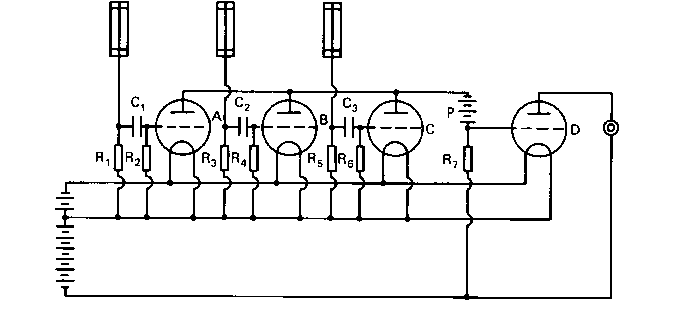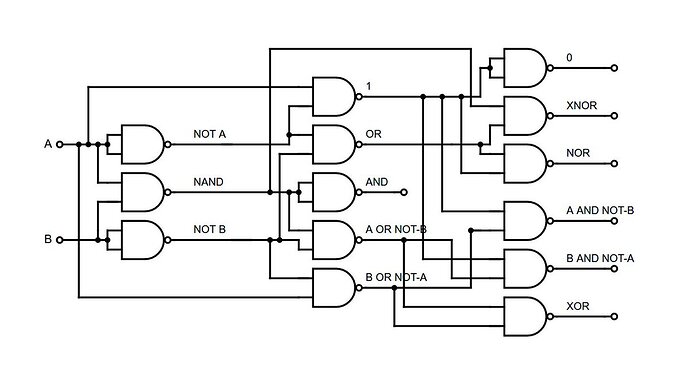The first digital logic gate built from vacuum tubes appears to have been invented by Bruno Rossi in 1930. Rossi, an Italian physicist studying cosmic rays and radioactivity, was not working on computing equipment but rather sought to detect near-simultaneous events from multiple Geiger-Müller tubes, His Rossi coincidence circuit was an n-input AND gate which identified coincident pulses from multiple detectors with a time resolution of one millisecond.

With an inverting output, this circuit would be a NAND gate, from which any Boolean function can be computed and flip-flops constructed as a data storage element.
6 Likes
In the 1960s small town midwest middle school libraries still had books like the one I used to build a basement chemistry lab, using things like lightbulbs as flasks, carbon rods from used batteries as arc furnace elements, etc. Then there was SciAm’s “amateur scientist” recipes for things like pulsed dye lasers. Nowadays, you’ll be put in some intelligence agencies file for searching for such “unsafe” things on the internet, and even the college library shelves have been purged.
2 Likes
Around ten years ago, I found a PDF scan of the 1960 edition of The Scientific American Book of Projects for The Amateur Scientist, a collection of “Amateur Scientist” columns from the 1950s. The projects are…ambitious, including:
- Building a spectrograph for a backyard telescope
- Chromatography and Zone Electrophoresis Equipment
- Building a seismometer
- Cloud chamber
- Magnetic resonance spectrometer
- Home built particle accelerator
- Millikan oil drop experiment
- Electronic mouse that learns
- Build a wind tunnel
- Amateur rocketry
- Build a 100,000 volt electrostatic generator
- Build an X-ray machine
- Hilsch vortex tube
This book is hopelessly out of print. I have no idea of the copyright status of this book. Here is where I found it:
It is wise to download and save a local copy as things like this have a tendency to disappear.
7 Likes
Done. Thanks! This will go into the elective part of a curriculum for boys recapitulating technology’s history geared toward a graduation requirement of building a minimal homestead. (Something Scouting should have been about from the start.)
3 Likes
Here is how you can compute any of the Boolean functions using only NAND gates.
In practice, if you wanted an always 1 or always 0 signal, you wouldn’t, of course, use NAND gates but just tie to the positive or negative rail, respectively.
This how to make a gated D flip-flop from NAND gates.

When the “E” signal is asserted, the output signal “Q” and its inversion “Q̅" are set to the value of “D”. When “E” is off, the value of “D" will be ignored and the outputs will retain the last value to which they were set.
3 Likes
Speaking of home-made dye lasers too dangerous for The Current Year:
2 Likes




